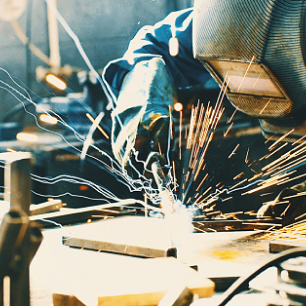Jump to:
Keeping Pace: What It Means in the Welding Industry Today
In welding, standing still means falling behind.
That’s the idea behind this year’s Welding Summit theme: “Keeping Pace in an Innovative World.” But what does “keeping pace” really mean in today’s welding landscape? With a full lineup of sessions addressing automation, workforce development, new materials, and evolving code compliance, the 2025 Welding Summit is tackling that question from every angle.
Here’s a look at what’s changing—and what it takes to stay in the game.
It’s Not Just About Technology—It’s About Application
Welding innovations aren’t new. But the speed of change is. Whether it’s orbital welding in pharma and aerospace, AI-assisted MTR validation, or laser cladding vs. PTAW, the bar for knowledge keeps rising.
Take Chris Herzog’s session, “Innovations in Orbital Welding Technologies.” It dives into AI tools that help operators work more efficiently and safely—with less training time. Similarly, Paisley Witkowski’s talk on AI in fabrication explores how automation can streamline inspection and reduce human error in data validation.
These aren’t future-forward “what ifs.” They’re already in the field.
The Human Side of Keeping Pace
Technology is critical—but so are people. And welding leaders are increasingly focused on workforce readiness, technician training, and knowledge transfer.
In “Welding’s Human Innovation Gap,” Andrew Brown addresses the real shortage: skilled hands to run today’s high-tech equipment. He offers practical steps for recruiting and retaining new talent—particularly among Gen Z. Meanwhile, Cy Rankin’s session on heat-treating reliability emphasizes ongoing technician development and the role of communication in building trust and performance.
And for a wider lens on where the industry is headed, Robert Smilie’s presentation asks the question many are avoiding: “If We Build It, Who Will Work There?”
Metallurgy, Materials & the Modern Welding Engineer
Keeping pace also means brushing up on fundamentals that underpin welding performance—especially with high-consequence materials.
Jeff Henry’s session, “A Brief Review of How Steel Metallurgy Affects Welding,” brings back key ferrous metallurgy concepts critical to project success. For those working with high-performance materials, Brian Gaal’s talk on “Nickel Alloys: Where We’ve Been, Where We Are, and What the Future Looks Like” covers additive manufacturing, welding strategy, and the problem-solving role of nickel alloys.
From Big Data to Big Decisions
As connected systems and QA software become the norm, companies that understand how to interpret welding data gain a serious advantage.
Dan Colvin’s session, “Data-Driven Analytics Paired with Automation Deliver Big Results,” explores exactly that—how to move from guesswork to evidence-based decision making. It’s a glimpse into what welding operations will look like five years from now… and a chance to catch up before the curve gets any steeper.
Want to Keep Pace? Start Here.
You don’t have to reinvent your workflow overnight. But you do have to stay informed, connected, and ready to adapt.
Welding Summit 2025 brings together industry experts, innovative technologies, and strategic insights—all in one place. Whether you’re a CWI, welding engineer, fabricator, or facility manager, this is where the conversations are happening.
Register Now! Special attendee pricing ends Saturday, July 12.
August 6–8, 2025 | The Woodlands, TX
Learn More About the Event


